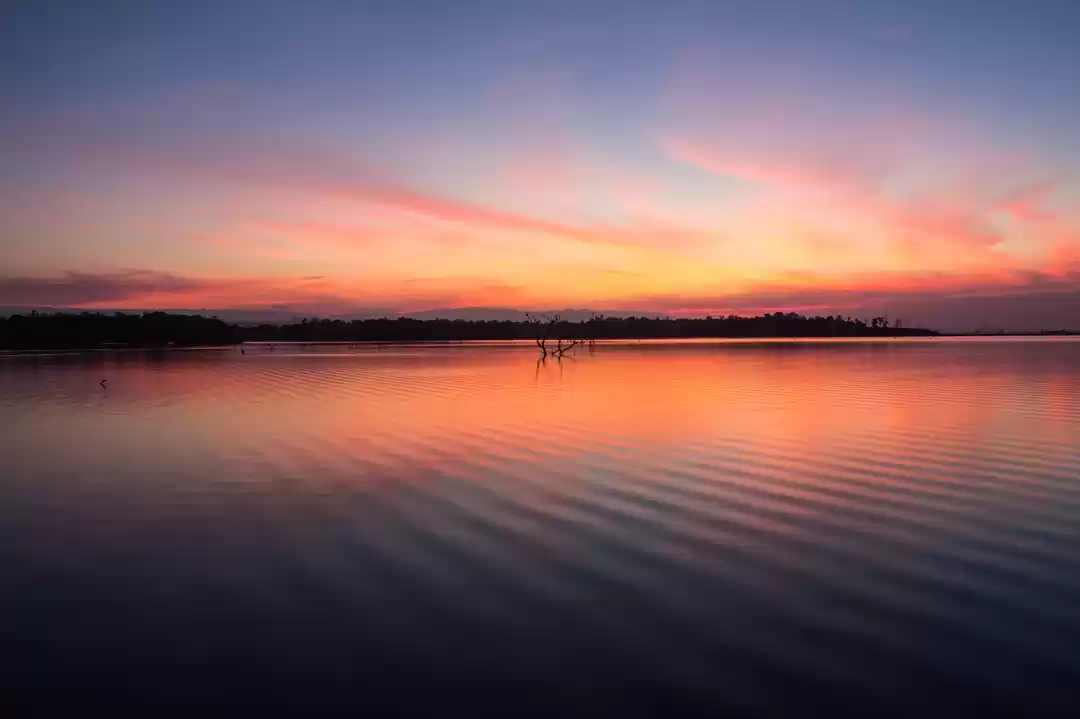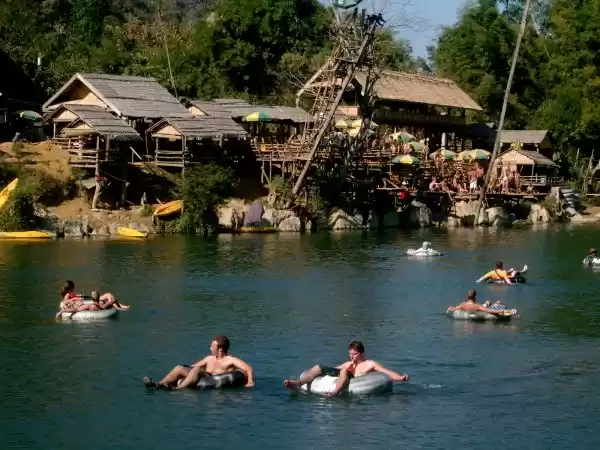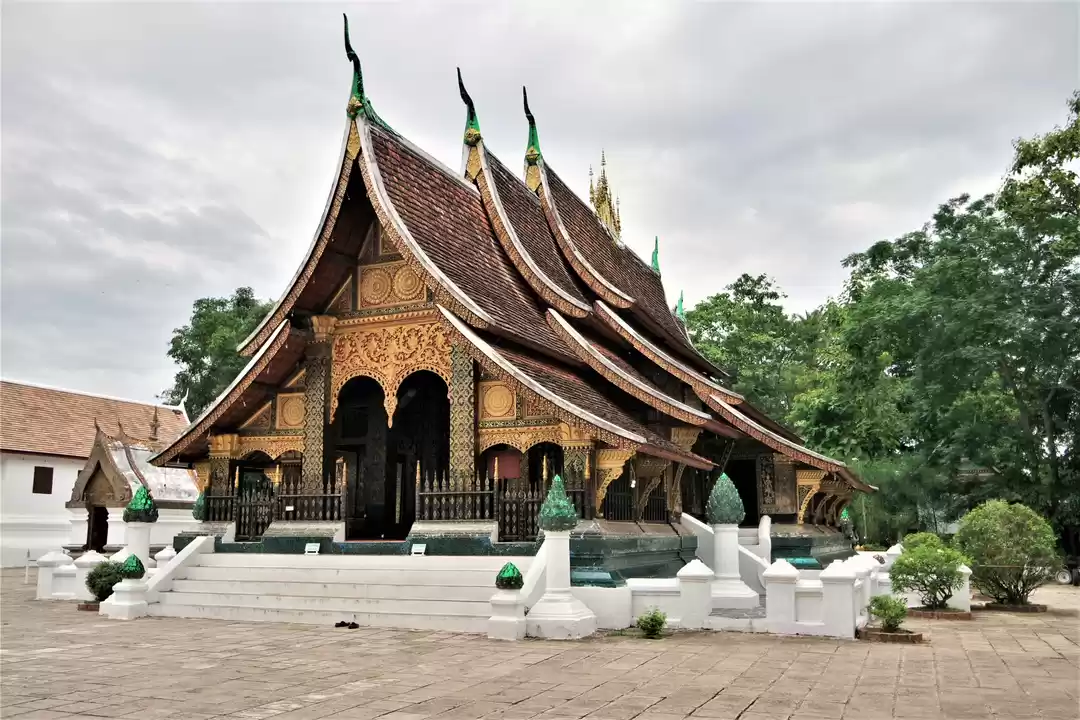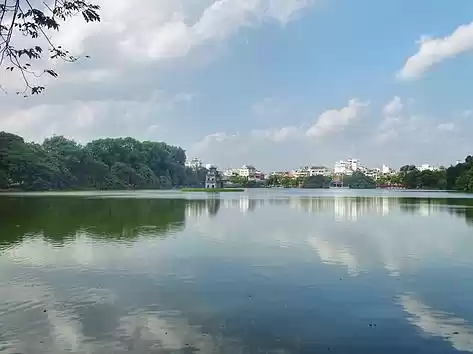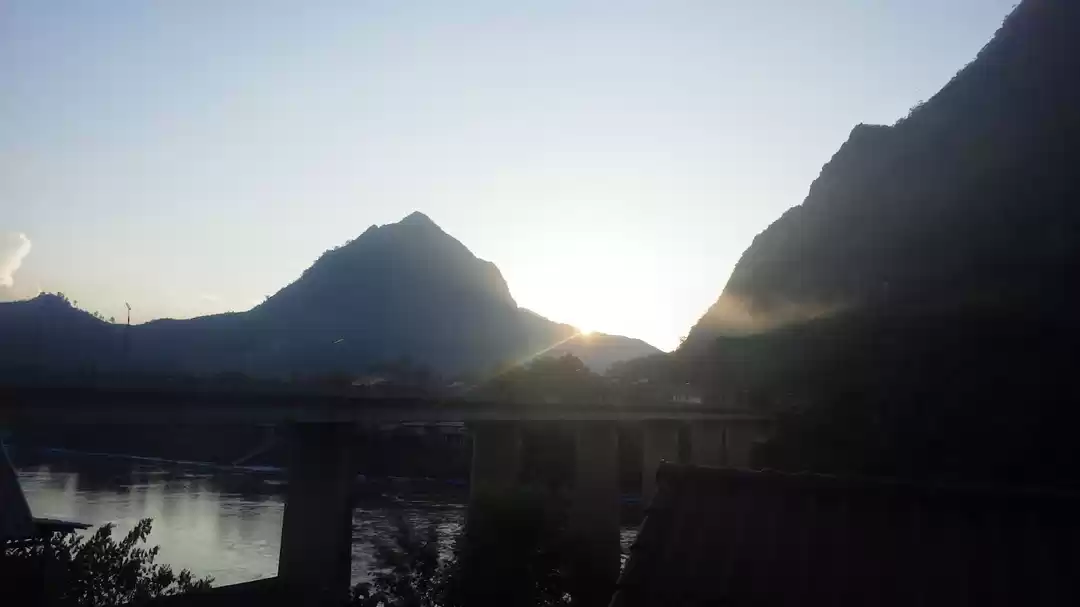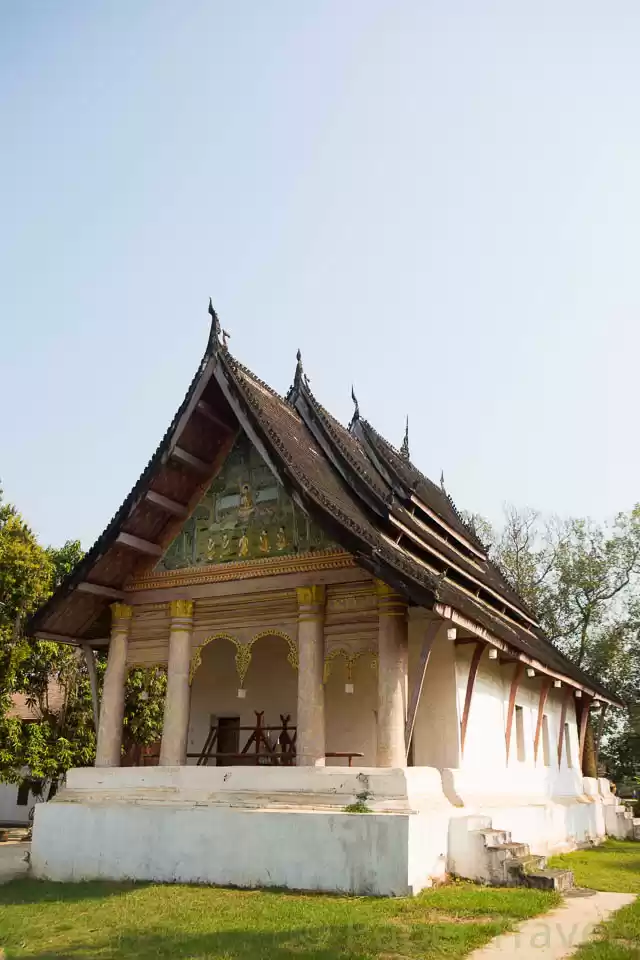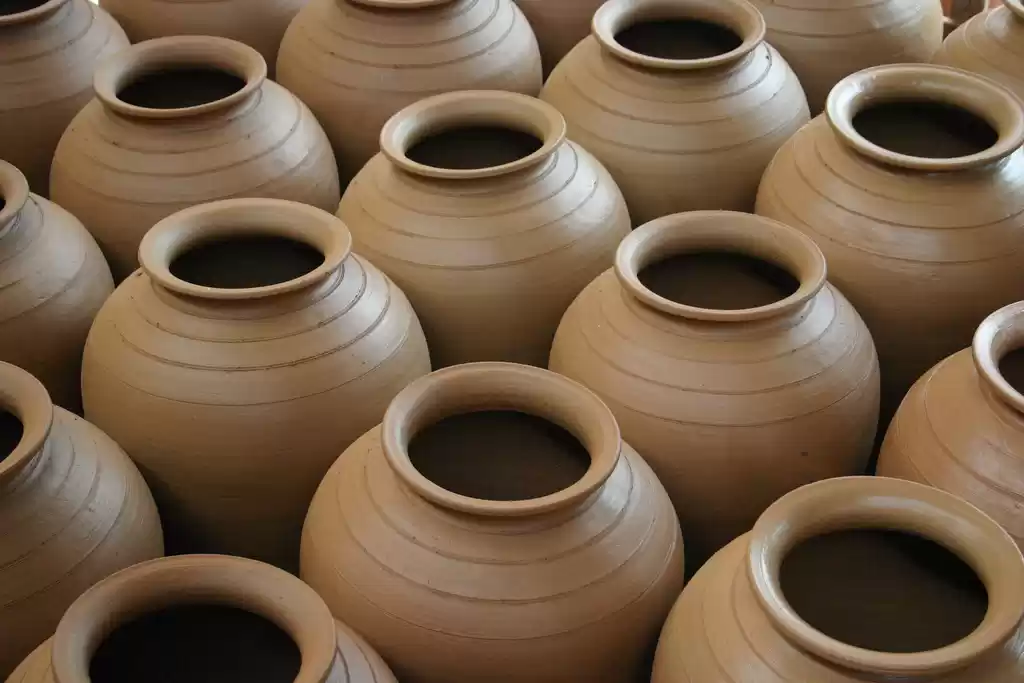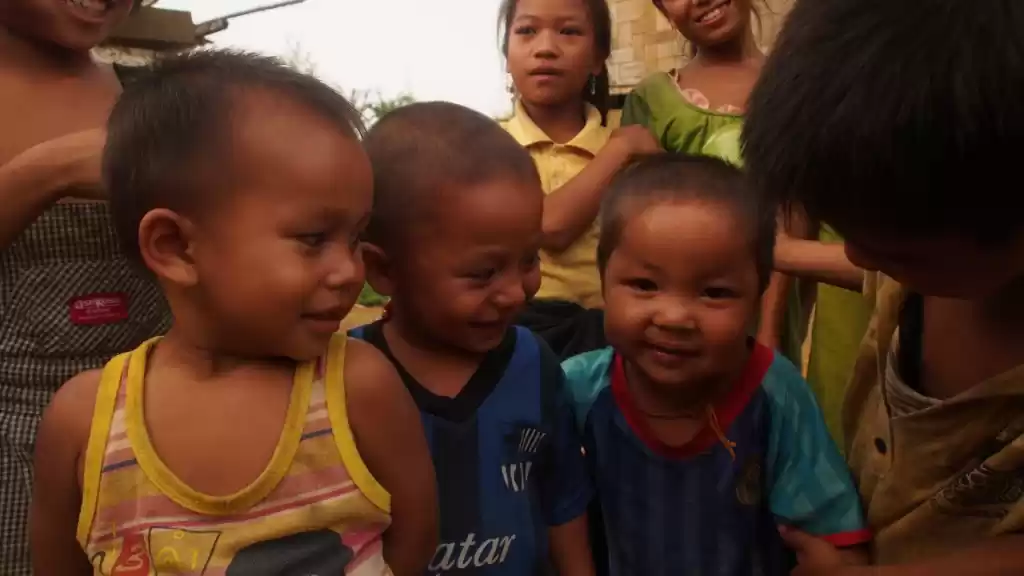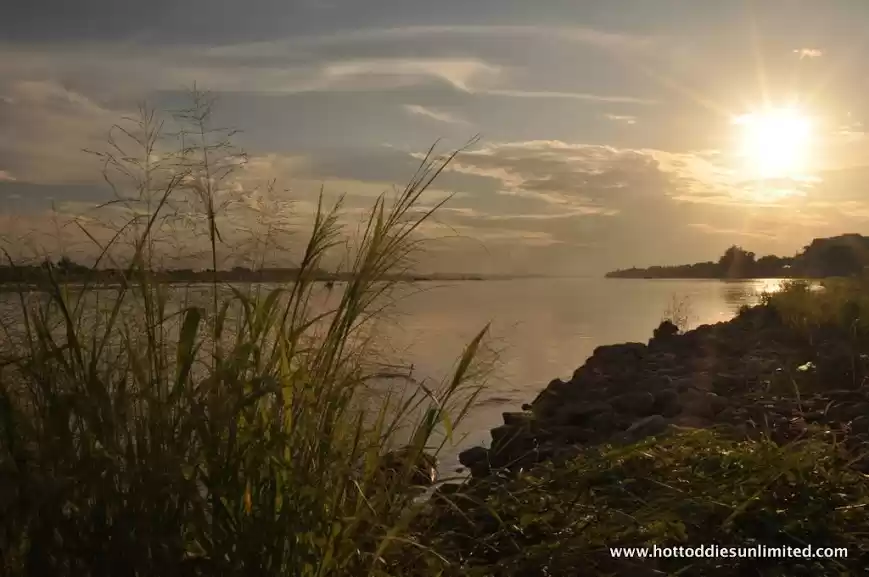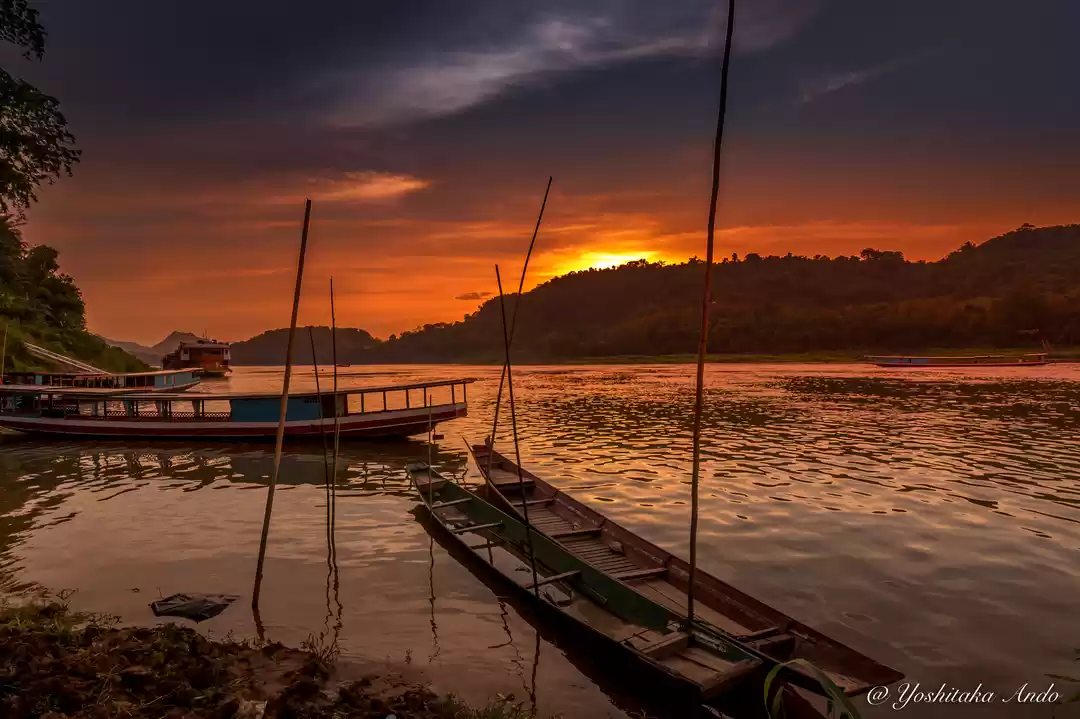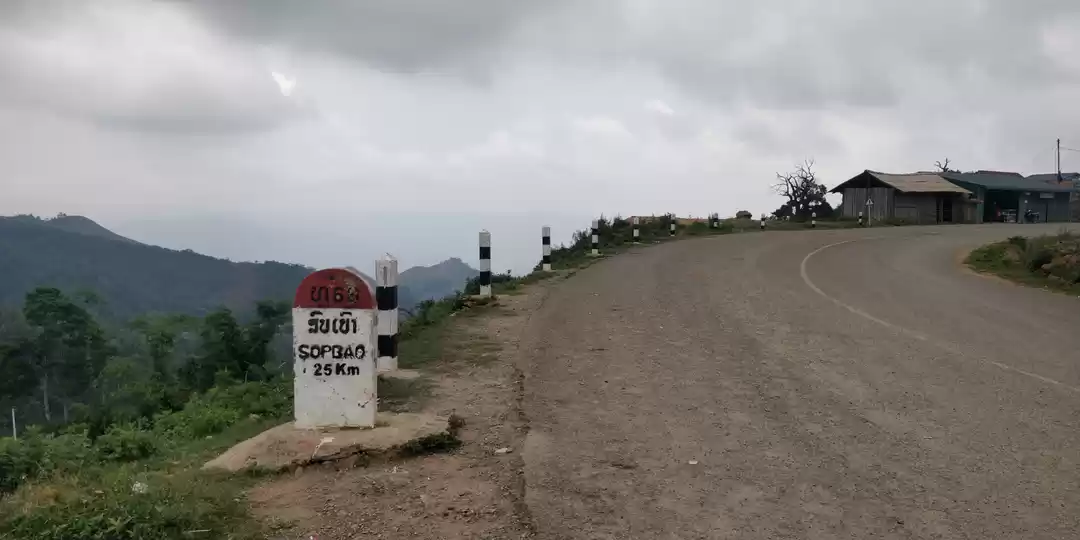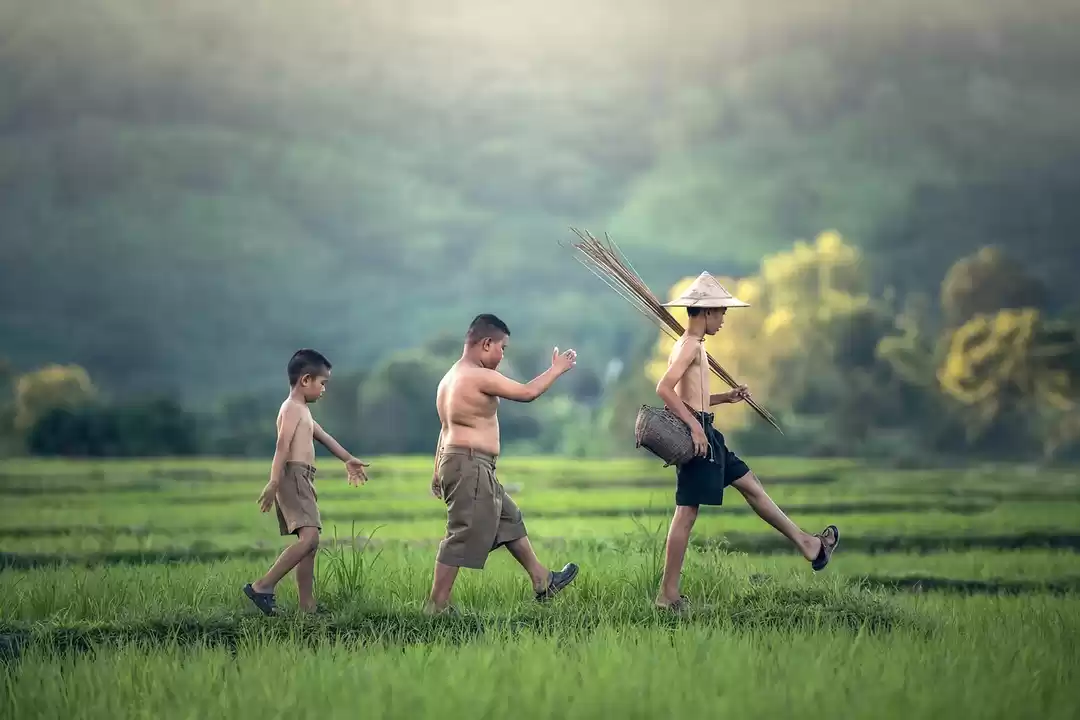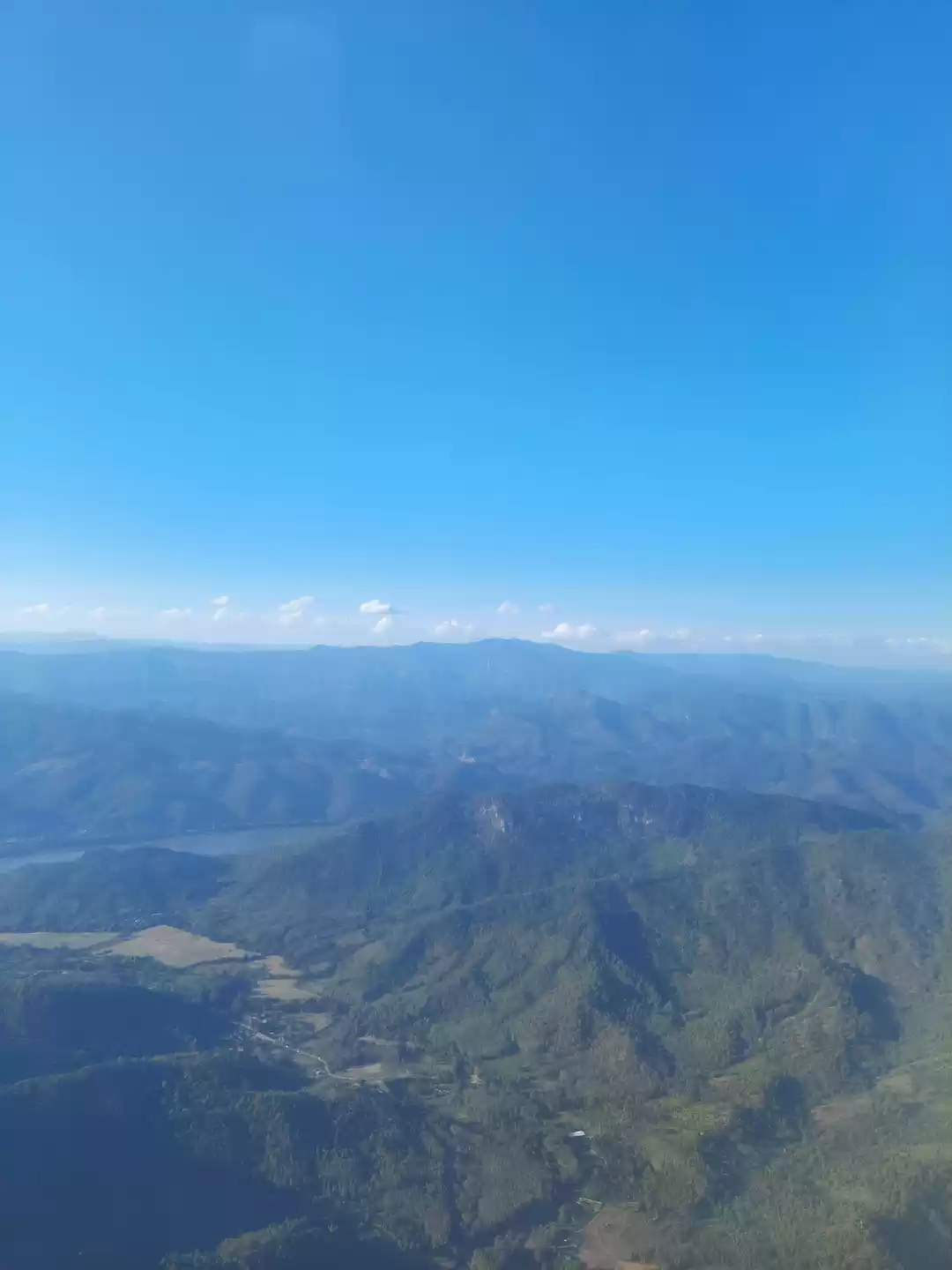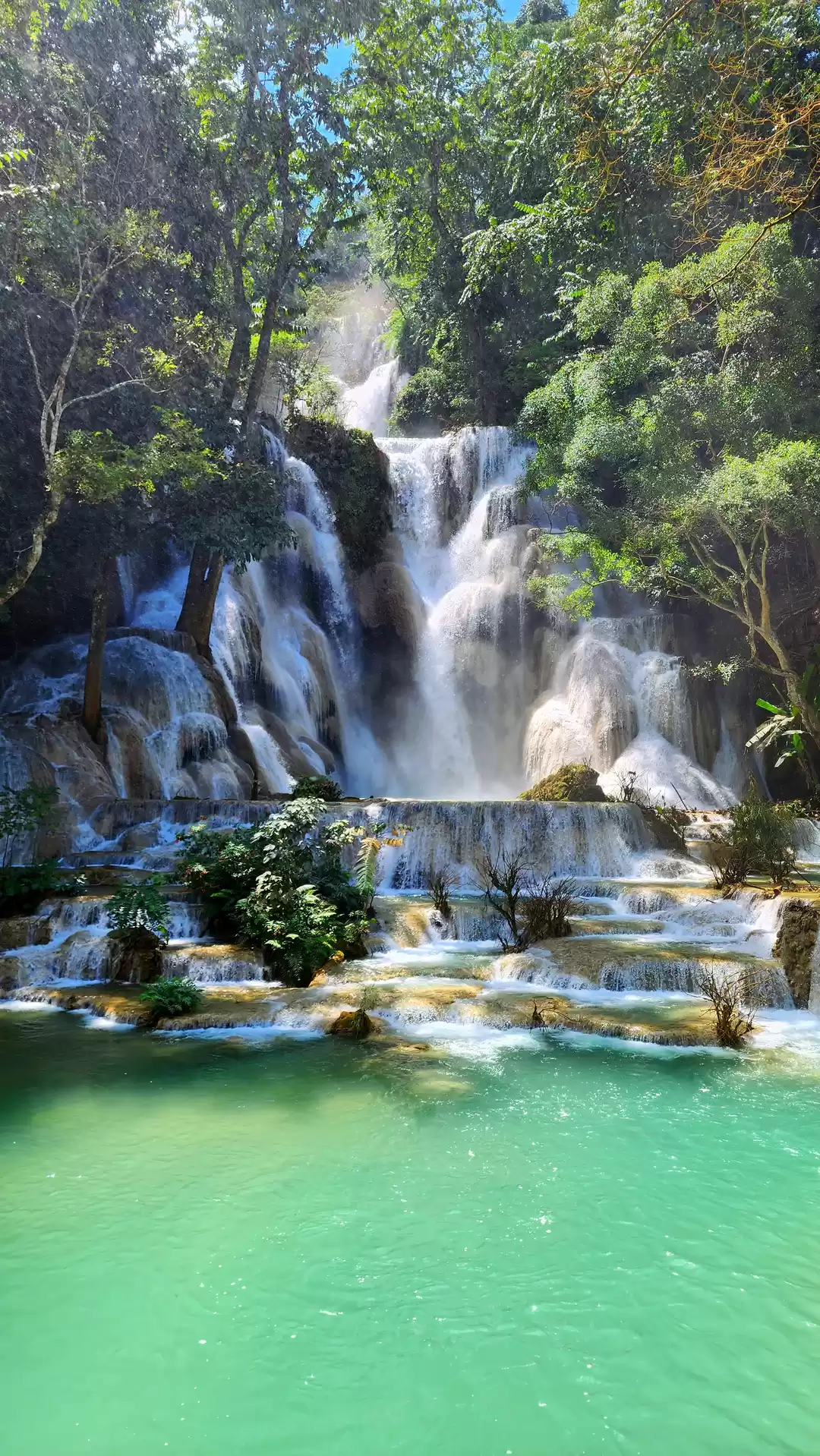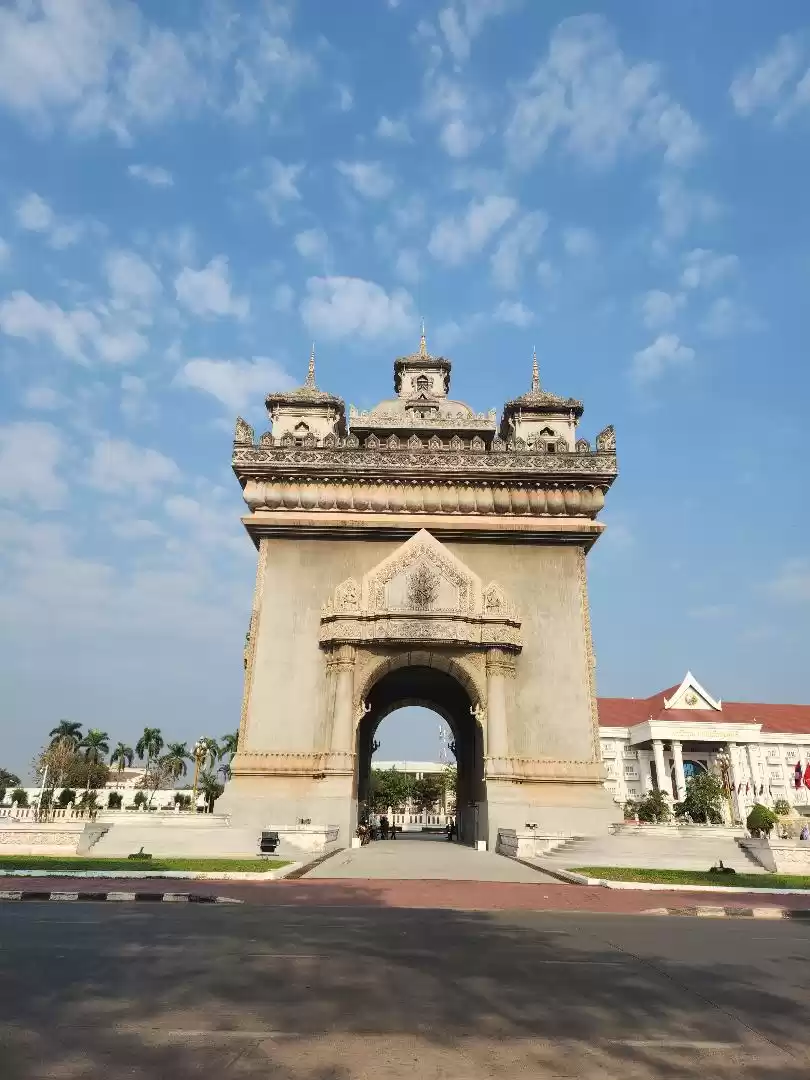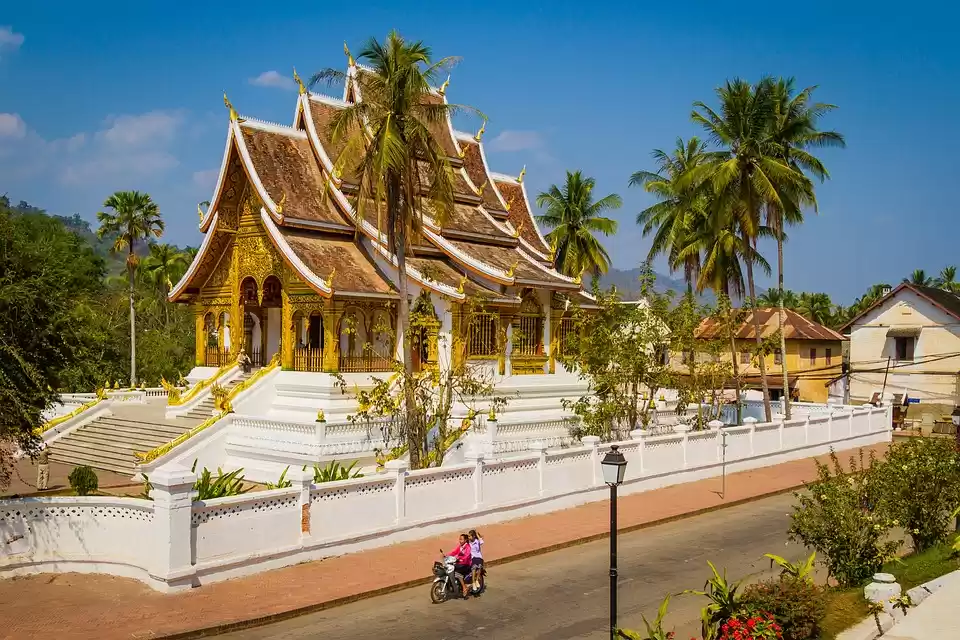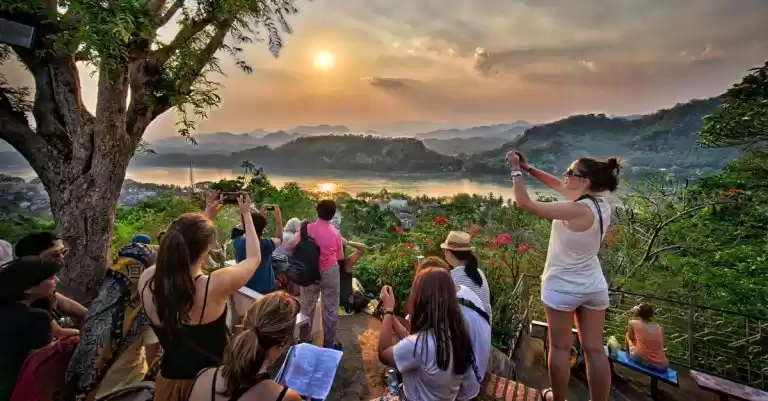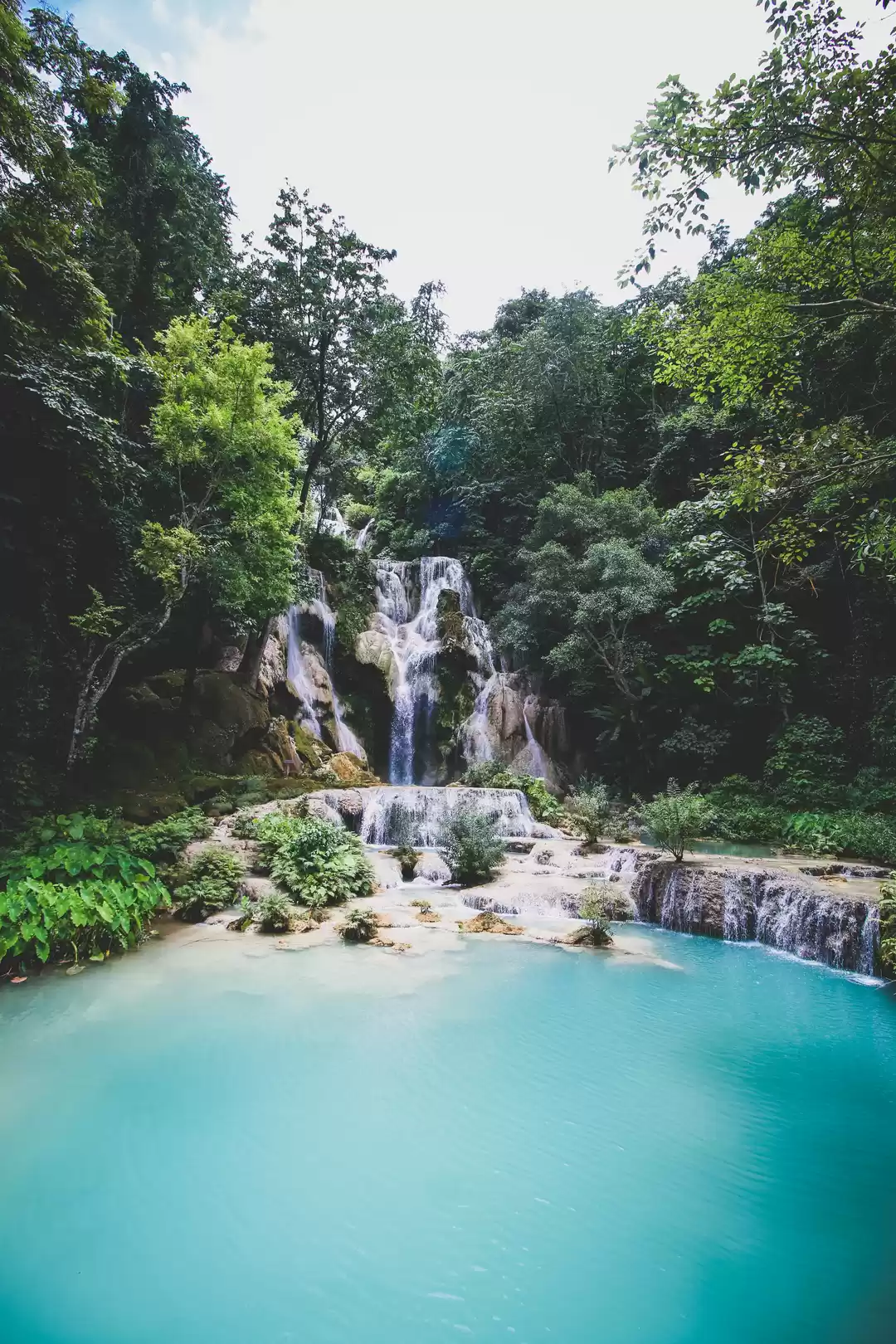
24 Hours from Kratie to Vientiane
We had booked a combo ticket in Kratie, Cambodia, that would apparently take us through the border and all the way up to Vientiane, the capital of Laos. We didn't have much confidence in it all coming together, but somehow it did. It actually involved a jeep, a bus, a mini-bus and a sleeper bus. It was a very long (about twenty-four hours) and at times, uncomfortable journey. The final leg in the sleeper bus was the best - a cosy bed with fresh linen and plump pillows!
Vientiane - A Sleepy Capital
We woke up in Vientiene. Having checked into our hotel, we went for a breakfast of French Croissants (a remnant of French colonialism) and had a wander round. Vientiene is probably the smallest and most sleepy capital city in the world. Situated on the banks of the Mekong, it wasn't until the 1990's that the city started to develop. There is a promenade, a cluster of restaurants, shops and several temples. The largest monument is Patuxai Gate which is inspired by the Arc de Triomphe.

Bitten by the Bug
After a couple of days, we took the ten-hour bus trip to the UNESCO World Heritage site of Luang Prabang. Originally, we were going to stop off in Vang Vieng to go tubing, but T had an unfortunate incident. She had been bitten on the sole of her foot. When she checked the bite, which was quite painful, a huge bug crawled out from beneath the skin! It then became infected and remained painful, so she thought it best to give the tubing a miss. Fortunately, it cleared up, but it was rather an unpleasant experience!
The road to Luang Prabang was a spectacular journey through the mountains. Up until now, our route through Cambodia and Laos had been through a very flat landscape, so it made a change to be in the mountains.
We had heard great things about Luang Prabang and felt as though we were going somewhere remote and special. Somehow it felt fitting that we would arrive somewhere like that at the end of a long and scenic road, rather than just flying in!

A Town of Temples
Charming Luang Prabang is set on the Mekong River against a backdrop of rugged mountains and verdant jungle. It was bursting with boutique hotels, quality restaurants, craft shops, monasteries, golden roofed temples (wats) and wandering saffron robed monks. We stayed for a week. The pace was slow and unhurried, but there was plenty to keep us occupied. We stayed at the lovely Mekong Riverview Hotel and from our balcony, we could watch the daily alms ceremony.

We climbed the three hundred and twenty-eight steps to the hilltop Wat Phousi, situated in the middle of the town. On the way up, we passed brightly coloured sculptures, shrines, caves and Buddhas. From the summit, we were rewarded with panoramic views of the rivers on either side.
Another highlight was the Royal Palace, a splendid Laos style building with a gold-plated roof and an adjacent museum. The most impressive of all the temples was Wat Xieng Thong, which had a richly ornate exterior and glass murals. All of the temples were beautiful in their own unique way and we wandered from one to the next exploring them all.

A Boat ride to the Pak Ou Caves
One day we took a narrow (rather unstable!) wooden boat down the river to the Pak Ou Caves, which are full of Buddhas of every shape and size. On our way, the boat broke down and we had to climb into another equally unstable boat that pulled up alongside us. Health and safety doesn't exist in Laos.

The Alms Ceremony
One of the highlights was watching the monk's alms ceremony. Every morning, the monks would pad barefoot through the silent streets to collect rice and fruit in their alms bowls. The giving of alms is a closely observed tradition and according to Buddhism, is merit making for those who make offerings. It was a peaceful and spiritual ceremony and remains one of our most lingering images of Luang Prabang.

Dining on Fried River Weed
In the evenings we had dinner at one of the many good restaurants or drank cocktails as we watched the sun sink over the Mekong. Our favourite restaurant was Dyen Sabai, situated on the other side of the river. We had to cross a rickety bamboo bridge to reach it. It was a chilled hangout, where we sat on cushions eating fried river weed and drinking mango margaritas, surrounded by fairy lights and lanterns.

There was a nightly handicraft market which we would regularly stroll through, where you could buy everything from cushion covers to slippers. Refreshingly, there was a lack of hard sell techniques so often used in Asia.
Back to Vientiane
The week came to a close and it was time to make our way back to Vientiene. Exhausted, after a long and arduous journey, we picked up a tuk tuk and set off to our hotel. Half way back, we ran out of petrol and the tuk tuk came to a stuttering stop. The driver dashed over the road to a garage which promptly closed up for the night as he arrived! We waited in the abandoned tuk tuk on the busy highway while he ran off down the road with a petrol can.
We did eventually make it back and enjoyed the next day taking in yet more temples in Vientiene. (There was something addictive about them - once you started, you couldn't stop!) The following day we left Vientiene over the Laos-Thai Friendship Bridge and took a sleeper train back to Bangkok.


